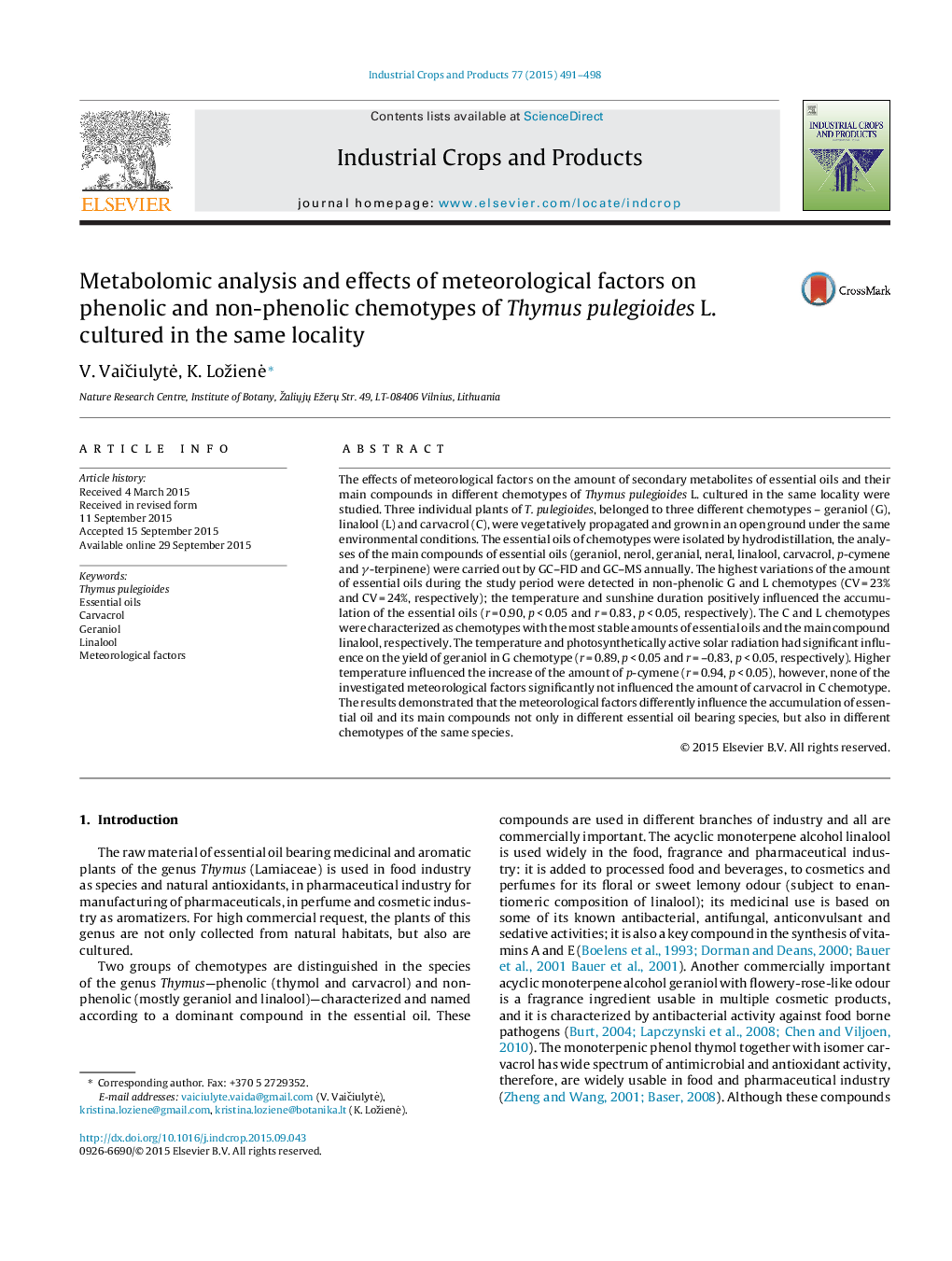| کد مقاله | کد نشریه | سال انتشار | مقاله انگلیسی | نسخه تمام متن |
|---|---|---|---|---|
| 4512652 | 1624833 | 2015 | 8 صفحه PDF | دانلود رایگان |

• Different chemotypes of Thymus pulegioides accumulate different biologically active compounds.
• Cultivation of chemotypes separately enables to grow the chemically standardized raw material.
• Quantitative and qualitative composition of essential oils of different chemotypes differently reacts to variation of the same meteorological factors.
The effects of meteorological factors on the amount of secondary metabolites of essential oils and their main compounds in different chemotypes of Thymus pulegioides L. cultured in the same locality were studied. Three individual plants of T. pulegioides, belonged to three different chemotypes – geraniol (G), linalool (L) and carvacrol (C), were vegetatively propagated and grown in an open ground under the same environmental conditions. The essential oils of chemotypes were isolated by hydrodistillation, the analyses of the main compounds of essential oils (geraniol, nerol, geranial, neral, linalool, carvacrol, p-cymene and γ-terpinene) were carried out by GC–FID and GC–MS annually. The highest variations of the amount of essential oils during the study period were detected in non-phenolic G and L chemotypes (CV = 23% and CV = 24%, respectively); the temperature and sunshine duration positively influenced the accumulation of the essential oils (r = 0.90, p < 0.05 and r = 0.83, p < 0.05, respectively). The C and L chemotypes were characterized as chemotypes with the most stable amounts of essential oils and the main compound linalool, respectively. The temperature and photosynthetically active solar radiation had significant influence on the yield of geraniol in G chemotype (r = 0.89, p < 0.05 and r = –0.83, p < 0.05, respectively). Higher temperature influenced the increase of the amount of p-cymene (r = 0.94, p < 0.05), however, none of the investigated meteorological factors significantly not influenced the amount of carvacrol in C chemotype. The results demonstrated that the meteorological factors differently influence the accumulation of essential oil and its main compounds not only in different essential oil bearing species, but also in different chemotypes of the same species.
Journal: Industrial Crops and Products - Volume 77, 23 December 2015, Pages 491–498